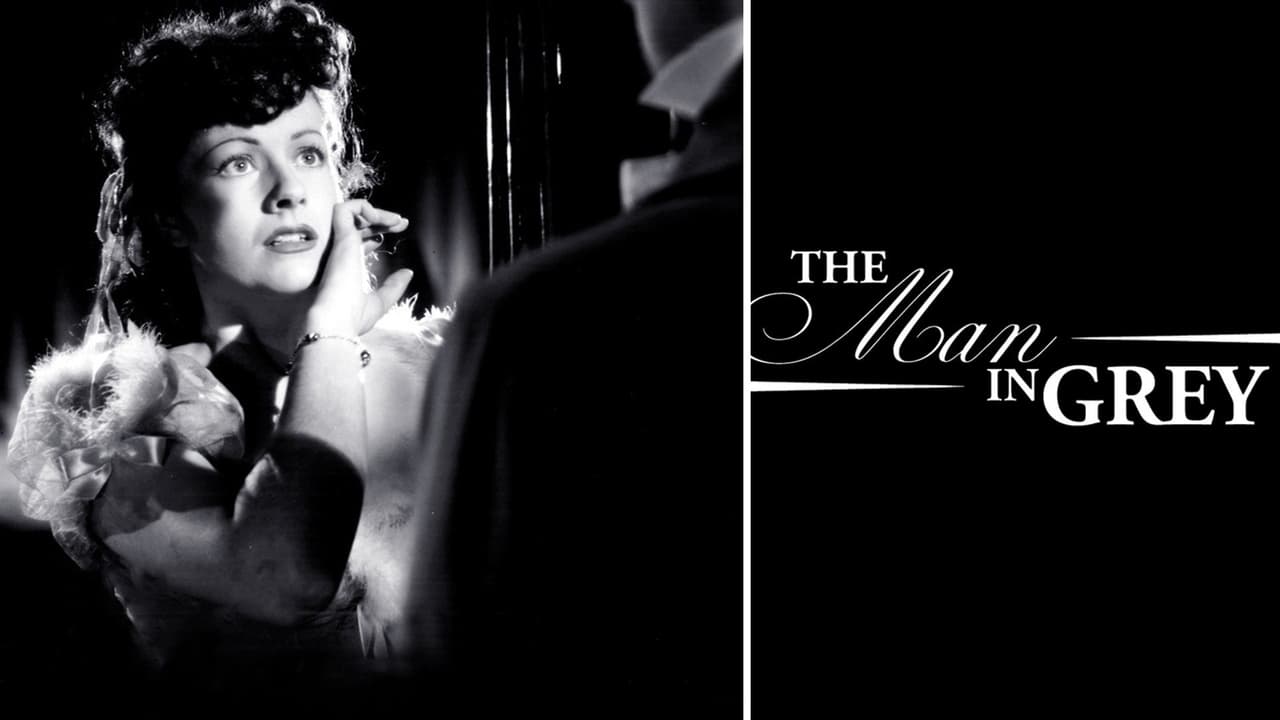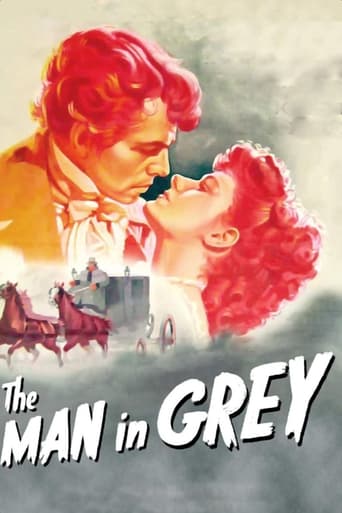

Producer: Edward Black. Executive producer: Maurice Ostrer. (The U.K. version is available on an otherwise excellent Network DVD. The full-length version seems to have vanished).A Gainsborough Picture, copyright 30 November 1945 by Universal Pictures Co., Inc. U.S. release through Universal. New York opening at the Winter Garden: 29 November 1945. U.K. release through General Film Distributors: 23 August 1943. Australian release through Gaumont British Dominions/2Oth Century-Fox: 12 October 1944. 10,812 feet. 120 minutes. (The full-length version was released only in Australia. In the U.K., the film was cut to 116 minutes, in the U.S.A., to 93 minutes).SYNOPSIS: When the home of the Rohans is being sold up, Lady Clarissa Rohan meets a young airman from Jamaica, Rokeby, who tells her that his mother's ancestor was in love with the nineteenth- century Clarissa Rohan; and in flashback we see . . .NOTES: Number seven at British ticket windows for 1943. The film did less well in Australia, but was still a big success, coming in at number thirty-one for 1944.It was inevitable that such a colossal box-office success be followed by some sort of "sequel". This followed in 1944 when Calvert, Mason and Granger were re-united for Fanny by Gaslight (pointedly re-titled Man of Evil in the U.S.A.). The Wicked Lady, which re-teamed Lockwood and Mason with writer/director Arliss, appeared in 1945.COMMENT: Superbly photographed and most expansively produced with dazzling sets and period costumes galore, "The Man in Grey" is directed with such style and occasional inventiveness (taking full advantage of its magnificent sets and liberal production values), that one's mind and certainly one's eye are distracted from the penny-dreadful plot. (One's ear, alas, is still assailed by some choice samples of cumbersome dialogue).More than competent acting by a sterling cast of players also helps immeasurably. Lockwood is perfectly cast as the wicked lady, Calvert is in her element as the hapless and hopeless heroine, while Mason snarls delightfully as the surly "grey", and Stewart Granger (not always photographed too flatteringly) wanders along in top tongue- in-cheek form as a winning librarian until smothered by the excessive demands of a ridiculous plot. A wonderful group of support artists lend their talents too, among which one must single out Martita Hunt as a fussy schoolmistress, Helen Haye as Mason's resigned if dutiful mother, Beatrice Varley as a slipsy Gypsy, Jane Gill-Davis as Calvert's genteel mother, Raymond Lovell as the somewhat dithery prince regent, and Ann Wilton as the put-upon teacher, Miss Edge.Despite the absurdities and excesses of its script (doubtless directly derived from the original novel), such lavish squandering of talent and money has produced a most enjoyably escapist slice of quasi- historical melodrama.
... View MoreThe Man in Grey is directed by Leslie Arliss and adapted to screenplay by Margaret Kennedy and Doreen Montgomery from the novel of the same name written by Eleanor Smith. It stars Margaret Lockwood, James Mason, Phyllis Calvert and Stewart Granger. Music is By Cedric Mallabey and cinematography by Arthur Crabtree.A forerunner of Gainsborough's Wicked Women movies, The Man in Grey is a delicious slice of British noir pie.Proudly decked out in period attire, story is ripe with dastards, narcissists, connivers, the selfish and the cruel. Headed up by Mason's Lord Rohan and Lockwood's Hesther Shaw, these people will stop at nothing to get what they want in life. It doesn't matter who is around them, friends and family etc, if they can in any way hinder their respective selfish goals then they will be trampled upon and not a further thought will be given. It all simmers to the boiling point where lives will not just be ruined, but also ended.The four principal players are great, their respective careers well on the way to leaving behind considerable bodies of work. Arliss (The Night Has Eyes) keeps the story simple in spite of the many character strands and traits jostling for meaty exposure, and photographer Crabtree (Waterloo Road) accentuates the miserablist ambiance with sharp black and white lensing.The use of black-face on white actors is awfully out dated, as is some of the dialogue, but don't hold these things against The Man in Grey. It's a darn fine bodice botherer, resplendent with characters straight out of noir's dark alleyways. 8/10
... View MoreJames Mason (like Richard Burton, Edward Arnold, and many other splendid actors - and actresses) never received the Oscar for any of his performances. This is one of the unfair side issues regarding the Academy Awards, as a measuring stick to film stardom. Everyone who has seen Mason's performances (and the others I mentioned) may know they are appearing in a "turkey", but they are serving their sections of the "turkey" with deluxe dressing. When they are appearing in "filet mignon" or the like, they really reach the heights. So, despite his lack of Academy recognition, Mason is remembered with great fondness by everyone who enjoys movies. To this day his voice is imitated in cartoons if you want to see a snooty, aristocratic villain.Yet I said "villain". How can I call the wounded, deserted IRA gunman Johnny (ODD MAN OUT) or Norman Main (A STAR IS BORN) or Humbert Humbert (LOLITA) a "villain". Yes, he did play Mr. Van Dam in NORTH BY NORTHWEST, but even that fellow had his less villainous moments (too few perhaps).The fact is, when Mason came to the U.S. to appear in Hollywood films in the late 1940s, it was as one of Britain's best villains. This was odd. He had been in films since the late 1930s, and had played a shell shock victim in THE HILL HAVE EYES as well as other parts. In FIRE OVER ENGLAND (an early role) he was an English Catholic nobleman who is planning to aid King Philip of Spain (for reasons of politics and religious freedom) but who is drowned fleeing the police of Elizabeth I. None of these performances had gained him his fame, deserved as it was. It was THE MAN IN GRAY that gained him fame.Set in Regency England (c. 1790 - 1837), Mason was what was termed "a Regency Buck". This was a fashionable, upper crust Regency aristocrat or wealthy man who enjoyed his privileges - frequently at the expense of everyone else around them. When Leslie Howard played Sir Percy Blakeney in THE SCARLET PIMPERNEL, his character is a foppish version of "the Regency Buck", acting the buffoon at the expense of Col Higgensbottom and even the Prince of Wales - regarding cravats - to hide his serious mission). Mason's character is actually a more openly forceful version of this character. The Marquis of Rohan is a great grandee of England (despite having the last name of a noted French Aristocratic house - connected to the "Affair of the Diamond Necklace"). He is fully aware of his position, and the subservient position of everyone else involved with it.Phyllis Calvert is Clarissa, the daughter of a local good family, who was a close friend of Margaret Lockwood (Hester). Their relations is similar to that of Amelia Sedley and Becky Sharp in VANITY FAIR, as good girl and bad girl. Rohan chooses to marry Clarissa because she is a proper (and subservient) wife to breed an heir. Clarissa tries to help Hester by getting her a good position in the household (bad mistake). Rohan is soon bored by marriage, and Clarissa mistakes this as a signal that she is on her own. She meets a traveling actor named Rokeby (Stewart Granger) and starts a relationship with him - egged on by Hester.Hester intention is to reveal it at the right time to Rohan, and replace the disgraced Clarissa. And she does. But it actually does two things. He does go after Rokeby to kill him. But after taking care of that problem, Rohan finds Clarissa going into physical decline. And his better character comes out. He tries to help his wife, but nothing he does helps...and she finally dies. The Marquis is heartbroken. SPOILER COMING UP: Hester still blind to the reality of the situation, confronts Rohan, and reveals her own passions. But now Rohan is fully aware of why Hester made her revelations, and what it has led to. Furious at being used, and at his own cost and of the woman he got to love, Rohan grabs a horse whip and whips Hester to death! It is an orchestrated, violent conclusion (and it's violence may be why the film is rarely shown on television). Despite making Rohan a killer at the end, because he is killing the real villain in the plot Rohan gets the audience to cheer him on! He becomes the "anti-hero" of the story. It gained Mason his international standing as "a man you love to hate". And it opened the doors to future Hollywood stardom.
... View MoreThe Man in Grey was the first and probably the most successful of the Gainsborough melodramas. The lavish regency tale centres around the aristocratic Clarissa Richmond (Phyllis Calvert) who dutifully enters into an loveless arranged marriage with the cold hearted Lord Rohan (James Mason)- the Man in Grey of the title.Love and intrigue are to enter Clarissa's life when a chance meeting with an old school friend, the scheming Hester (Margaret Lockwood), leads her to the dashing Rokeby (Stewart Granger).The story reaches its dramatic conclusion through twists and turns of plot and excellent performances from who can be called the four cornerstones of the war time British cinema - Stewart Granger, James Mason, Phyllis Calvert and Margaret Lockwood.The Man in Grey is my personal favorite of all the Gainsborough films, it is high drama and escapism. The Man in Grey is definitely worth another look.
... View More